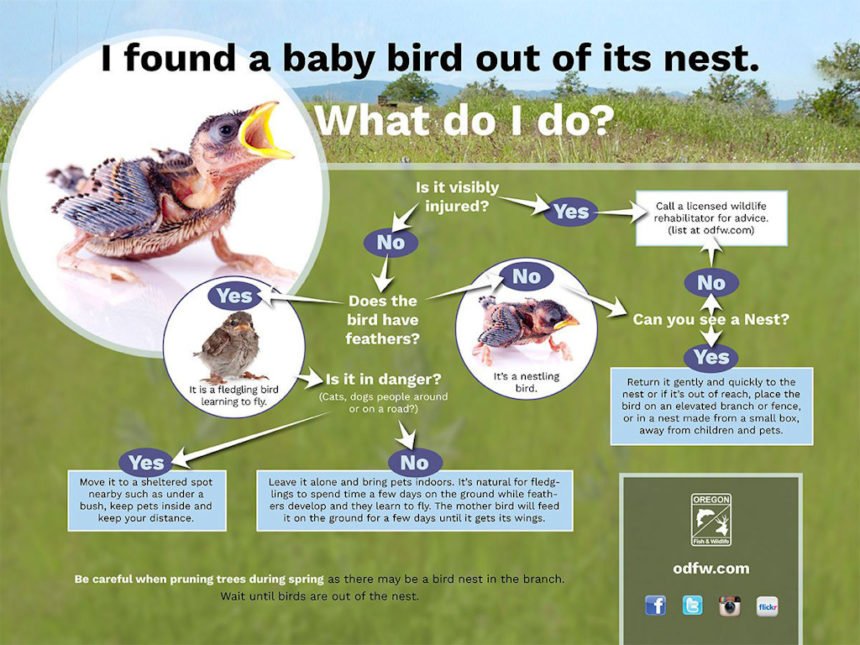Be on the lookout for nesting birds: Springtime is hatching time
SALEM, Ore. (KTVZ) -- ODFW biologists have been responding to an increased number of calls about nesting birds. April through July is a critical time for most bird species as they care for their young.
ODFW reminds Oregonians that taking and keeping an animal from the wild as well as moving or destroying an active nest is not only against the law, but may harm or kill birds.
Please consider these tips if you do encounter a nest or baby bird:
Leave fledgling birds alone. It is natural for fledgling (mostly feathered and on the ground) birds to be awkward while learning how to fly. If you see one on the ground, leave it alone and keep your distance. Bring your pets under control and indoors if possible. The bird’s parents will feed it for several days on the ground until it can fly. Some fledglings such as great horned owls spend up to several weeks on or near the ground as they learn how to fly. Owl parents protect and feed their owlets during this time.
Return nestling birds to the nest. Nestlings (baby birds not fully feathered) found on the ground can be gently and quickly returned to the nest. It is a myth that a nestling touched by humans will be abandoned by its parents. If the nest is out of reach, place the bird on an elevated branch or fence, or in a nest made from a small box, out of reach of children and pets. Leave the area so the parent birds can return. Similarly, if you find ducklings near a road or other hazard without an adult, they should not be taken home, but left in a safe location (like a water body with other ducklings) near where they were found.
Bring your pets indoors. Cats are a major cause of injury and death for all birds, killing millions of birds in the US annually. Keep your pets away from wildlife.
Be careful when pruning trees as there may be a bird nest in the branch. Wait until the birds nesting attempt is completed (no viable eggs or young). Native birds and their active nests are protected by state and federal wildlife laws.
Be aware of cavity nesters. Barn owls, woodpeckers and other birds could be nesting in hollowed-out trees or logs, in haystacks and even human-made cavities like open fence posts, chimneys, and other spaces around homes. Be proactive and exclude wildlife from these attractive nesting sites by using chicken wire or hardware cloth outside of the nesting season.
What if a bird flies into a window and appears hurt? Birds can be confused by reflective surfaces and mistakenly fly into windows. If you find a bird that has been stunned as a result of a window strike, put the bird in an uncovered box with a towel on the bottom. Keep it in a quiet and cool place, outside and away from pets. Check on the bird in a couple of hours. If the bird has recovered, it will have flown off. If not, contact your local ODFW office or your local ODFW-licensed wildlife rehabilitation facility. Keep in mind that many of the state’s wildlife rehabilitators are experiencing limitations on animal in-take capacity from operational changes due to COVID-19. If a bird can survive in the wild it needs to be left alone now more than ever.
